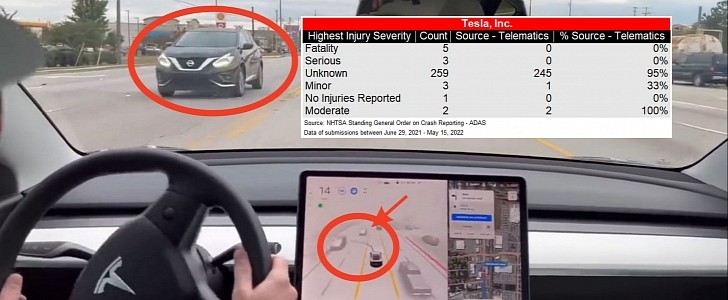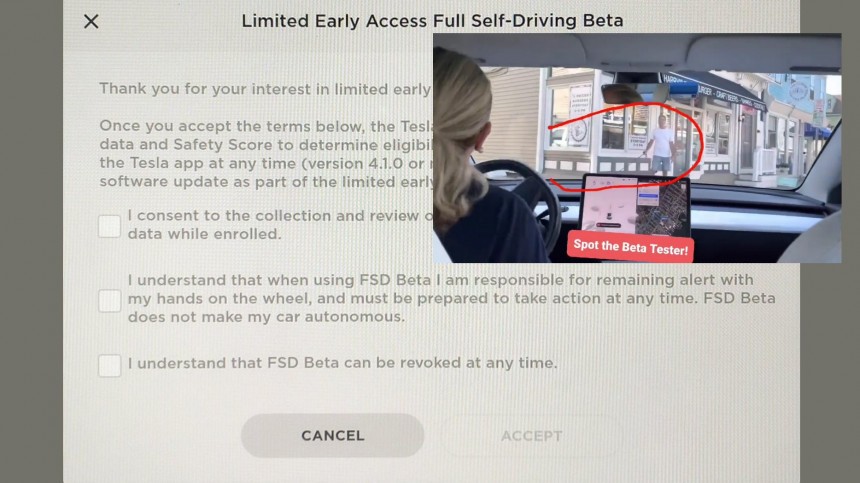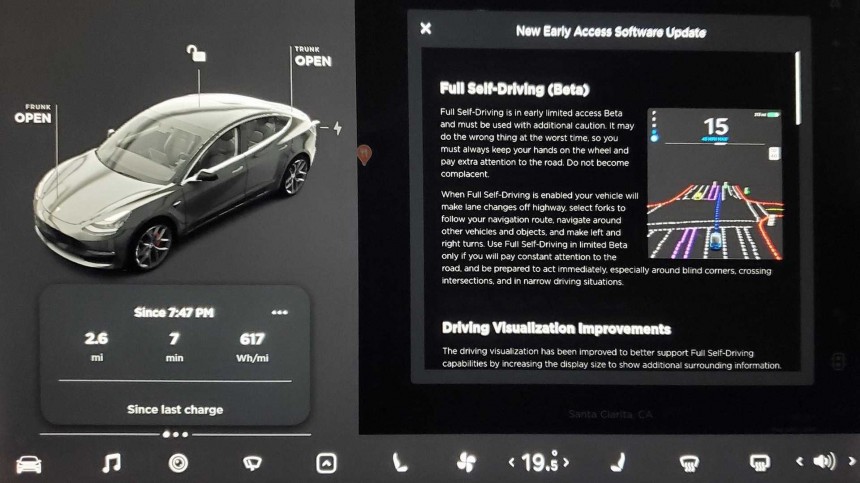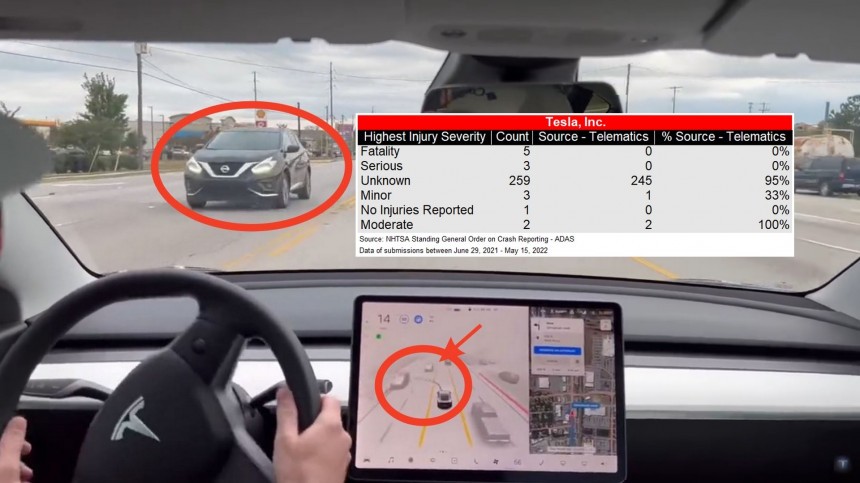Tesla only sells vehicles with Level 2 systems, even if Elon Musk and the company have engaged in autonowashing for a long time. This practice consists of promising a level of autonomy that the vehicle does not offer. Ogan’s most crucial discovery is that Full Self-Driving (FSD) responds to a large number of crashes.
In a tweet, he said 71% of all Tesla crashes involving Level 2 ADAS relate to FSD. We asked him for the data, which other journalists are already working on. Out of respect that they asked for it earlier, Ogan will only send us the information after their texts are published. That’s more than fair, but the Snow Bull Capital CEO gave us more than enough material to show how prevalent FSD crashes have become.
Although the written complaint called the software “Beta Autopilot,” elements such as the low-speed limit (35 mph/56 kph) and a reference to a “beta driving scoring rating” point to FSD. This rating is the Safety Score Beta, used by Tesla to determine which drivers may have access to FSD. The company is aggressively expanding the number of people that can evaluate the software, which may be a way to make it more attractive to pay $12,000 for it.
According to this complaint, the Tesla vehicle veered off the road and ran 500 yards (457 meters) along it until it stopped with all side airbags deployed. This would be enough for this crash to be included in the SGO data, whether the EV was using FSD or Autopilot. The damages would amount to something between $28,000 and $30,000, and this person was left without their car for five weeks.
The driver wrote the EV was in an area that FSD had already tackled before with no issues. This time, however, the vehicle “jumped over the curb,” damaging the bumper and wheel and causing a flat tire. The repair was completed on October 27, and the bill informed $2,332.37 in expenses. This person tried to get Tesla to pay for the damages, considering the software was recalled days later. The Tesla owner waited until December 22, 2021, for an answer and eventually liquidated the debt to get the EV back.
That raises the number of FSD crashes we are aware of to five. If 71% of the 273 wrecks Tesla reported to NHTSA were on FSD, as Ogan said, this number rises dramatically: at least 193 cases. But it gets worse.
We’re now waiting to confirm Ogan’s findings. If we manage to do that, it will be another significant blow to Tesla’s effort to put more people testing FSD. Above all, it would confirm that the system represents more of a risk than something that saves lives, as its advocates like to brag about it. Multiple safety specialists have already warned about the danger regular customers using beta software in vehicles represent. It may be the case that the U.S. government will finally start taking these alerts more seriously.
Let's start things off with this FSD Beta crash back in November, 2021. The media has never reported this. Airbags deployed, which means it should've been in the @NHTSAgov's SGO data, even if just on regular Autopilot, but for some reason it's not there. Collettsville, NC. pic.twitter.com/8iIGvRIsOD
— Taylor Ogan (@TaylorOgan) June 22, 2022
Here's a crash on FSD Beta in Houston, TX in October, 2021. Tesla knew about this. This is actually in the NHTSA's SGO data (Report ID# 13781-1981), which is further confirmation FSD Beta is SAE Level 2. This is the first time this crash is being reported beyond NHTSA complaint. pic.twitter.com/QnbTDDne2r
— Taylor Ogan (@TaylorOgan) June 22, 2022
However, in the eight cases NHTSA has from the last year where someone involved was either killed or seriously injured in the Tesla crash, telematics data was not immediately sent. NHTSA found out about all eight either from complaints, law enforcement, or the media. Not Tesla. pic.twitter.com/Zr3GzCNVwy
— Taylor Ogan (@TaylorOgan) June 22, 2022
71% of Autopilot-related Tesla crashes submitted via NHTSA complaints in 2022 have been on Full Self-Driving Beta.
— Taylor Ogan (@TaylorOgan) June 21, 2022





















